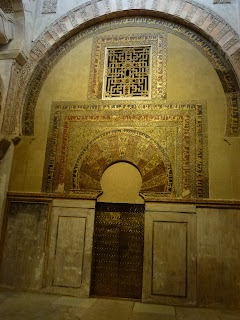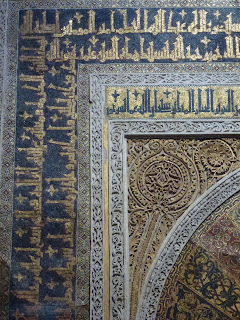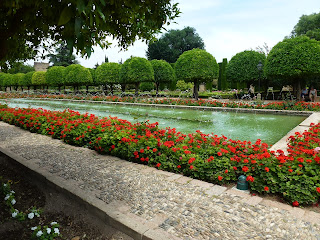Our last city in Spain before heading back to Madrid & home was the Andalusian town of Cordoba.
Cordoba ticked all the boxes for us: great food (like we couldn’t find good food ANYWHERE in Spain !!!) & a Morrish palace (now a cathedral) called the Mezquita.
Cordoba has a rich history – conquered by the Romans in 206 BC, it became a major city in Hispania (what the Romans called Spain). Cordoba’s most famous Roman citizen was Seneca (one of the great orators of the empire).
You get a sense of what this city was like during this time by the Roman ruins scattered throughout the town. The most famous Roman landmark is its Roman bridge: built around the 1st Century BC, the original bridge no longer exists. They have, however, used the original foundations. The last time I was here in Cordoba (2006), the bridge was under renovations – they have now been completed.
Capured in 706 AD by a Muslim army, the town became the capital of the independent Arab Muslim emirate of al-Andalus. At the height of its power (around 1000 AD), it was one of the most advanced cities in the world as well as a great cultural, political, financial and economic centre.
At one point it housed the largest library in the world, containing between 400,000 & 1,000,000 volumes.
As a great Muslim centre, the site of the former pagan temple, then converted to a Visigoth church, was, once again, rebuilt into a mosque. What they built was one of the most amazing, architectually-spectacular building in the world. It truly deserves its UNESCO World Heritage status. Its design is based on the Grand Mosque of Damascus.
After the Catholic reconquest of Cordoba (the Reconquista of 1236), the mosque was converted to a Catholic church.
Thankfully, they didn’t trash the mosque & rebuild it into a grim, Gothic cathedral. I like to think that the Catholic conquerors of the time saw this amazing building & were left speechless & gob-smacked at its exquisite beauty & architecture.
The photos will explain why the Mezquita is so amazing.
The Roman Bridge
There was a significant Jewish presence in Cordoba once, until the Catholics kicked them all out of Spain. The Synagogue of Cordoba is one of only three left (intact) in Spain.
The Mezquita
The Alcazar of Cordoba
Yes...Cordoba has an Alcazar, called the Alcázar de los Reyes Cristianos. As with any Alcazar, it has an impressive fortress/palace complex & gardens with water features & citrus trees.
Once the Catholics took over Cordoba, they converted the Moorish palace into a fortress. From about 1482, the Inquisition (yes....the Spanish Inquisition) moved its headquarters there, converting much of the palace, including the Arab baths, into torture and interrogation chambers. The Inquisition maintained a presence there until the early 1800s.


























No comments:
Post a Comment